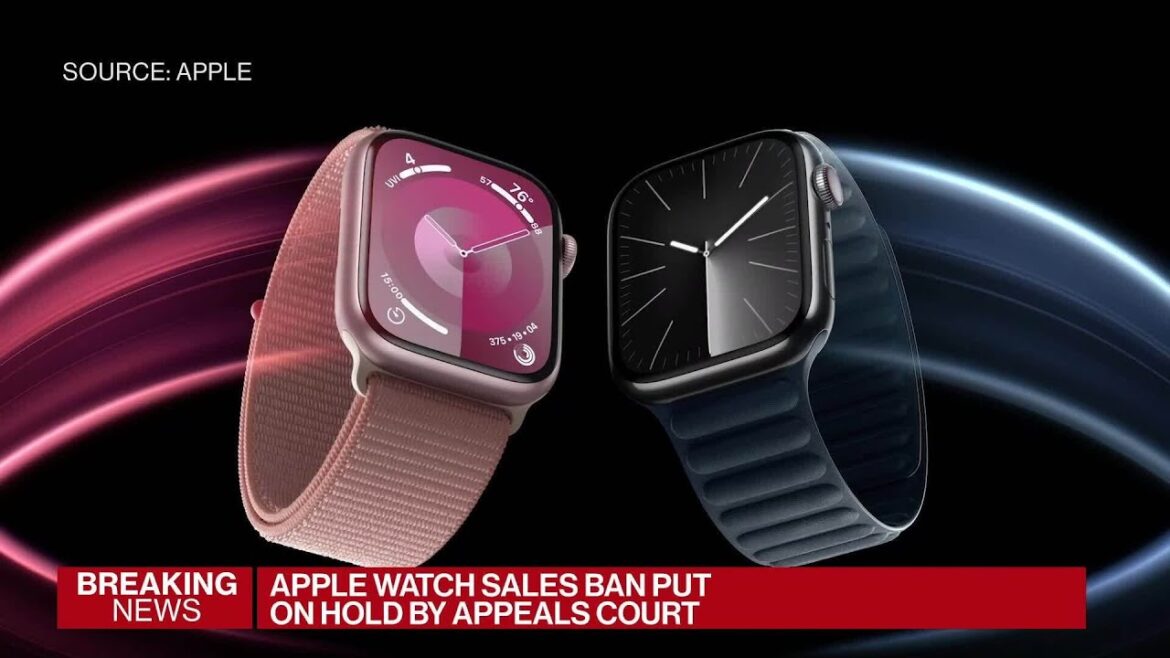The iconic Apple Watch, celebrated for its fusion of cutting-edge technology and sleek design, has found itself at the center of a storm.
The latest iteration of the popular wearable has been unceremoniously pulled from the shelves in the United States, marking a historic moment driven by a profound patent dispute.
This technological tussle revolves around the intricate pulse oximetry sensors embedded in the Apple Watch. These sensors play a crucial role in measuring blood oxygen levels, contributing to the device’s health monitoring capabilities. However, Masimo, a distinguished player in the medical technology realm, contends that Apple’s employment of these sensors infringes upon their patents.
Apple staunchly denies these allegations, asserting that Masimo’s legal pursuit is motivated by a desire to launch its own competing smartwatch. Nevertheless, the US International Trade Commission (ITC) has ruled in favor of Masimo, leading to an import ban on the contentious Apple Watches in question. This enforcement came into effect on December 26, causing ripples in the tech industry.
Anticipating the regulatory move, Apple took pre-emptive measures by halting sales, including the removal of the affected devices from its official US website starting December 18. This strategic move aimed to mitigate the impact of the ban, demonstrating Apple’s agility in navigating legal challenges.
It’s essential to note that the ban exclusively affects the US market, leaving Apple Watches unscathed in other regions. Furthermore, the prohibition is specific to the latest models, namely the Apple Watch Series 9 and Apple Watch Ultra 2. Existing watches with retailers and customers remain unaffected, offering some relief to the extensive user base.
In response to the ban, Apple has expressed strong disagreement with the USITC’s decision. The tech giant is actively exploring legal avenues to reverse the exclusion order and swiftly return the affected Apple Watches to US customers.
Conversely, Masimo views the ITC decision as a validation of the integrity of the US patent system. A spokesperson for the medical technology company hailed it as a victory that ultimately safeguards American consumers.
The future of the Apple Watch in the US hangs in a delicate balance, presenting a conundrum with three potential outcomes. One possibility is that the ban endures, leading to the permanent exclusion of the current Apple Watch models from the US market. However, this scenario seems improbable, given Apple’s reluctance to surrender a product integral to its global success.
The more likely scenarios involve a legal reversal of the ban or a negotiated settlement between the two companies. Apple, known for its tenacity in legal battles, may pursue avenues to overturn the USITC’s decision. Simultaneously, the tech giant might engage in discussions with Masimo to address the patent dispute through financial compensation or strategic agreements.
Apple’s respite might come in the form of a review by the US Customs and Border Protection, evaluating redesigned versions of the Apple Watch that exclude the disputed technology. This review, expected to conclude on January 12, holds the promise of offering a glimpse into potential resolutions.
As the clock ticks down, industry watchers and consumers alike await the unfolding chapters in this intriguing saga.

